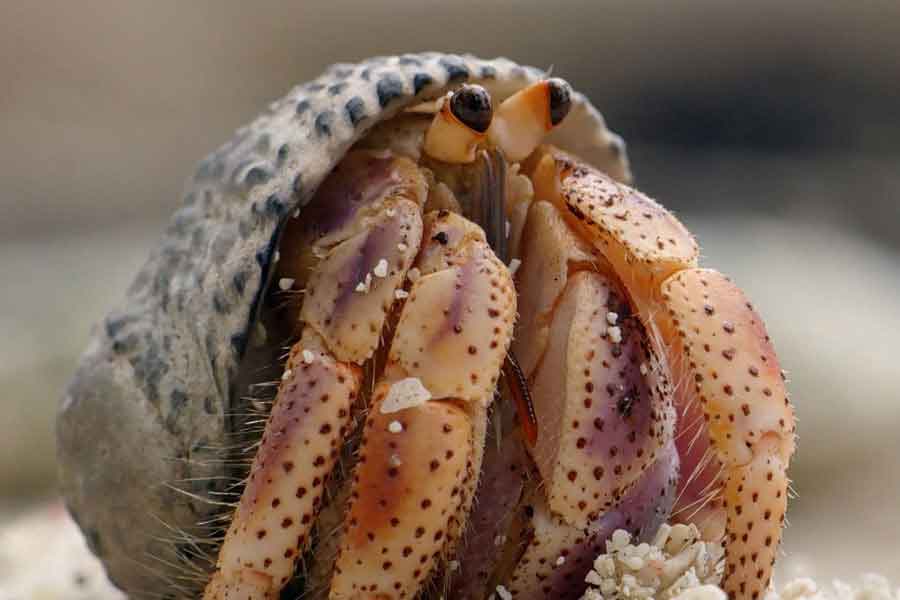
Crabs have remarkably diversified in response to their environment. Undoubtedly, the most striking example is the hermit crab, which, lacking its own shell, uses a second-hand one and takes up residence in a snail shell, changing it for a larger one as it grows.
Sometimes, a crab cuts a piece of sponge and places it on the shell. The sponge, composed of independent cells, continues to grow, eventually covering the entire shell. When the crab senses the presence of a predator, it remains still and goes unnoticed. Another possibility is that an anemone attaches itself to the shell, using the restless crab as transportation in search of food. The crab allows the anemone to reside on it, benefiting from the protection of its stinging tentacles. Even when the crab changes its shell, it gives «its» anemones enough time to relocate.
Most hermit crabs have a «roommate» in the form of a small polychaete worm. These tiny marine organisms, worm-like in shape, move with the help of small bristles. When a polychaete moves in with a hermit crab, it not only finds a secure home but also a source of food. As the crab feeds, the polychaete extends its head and consumes the morsels dropped by its companion. Undoubtedly, it is a unique and charming trio that leisurely wanders the ocean floor.
«One cannot defend what one does not love, and one cannot love what one does not know.»

